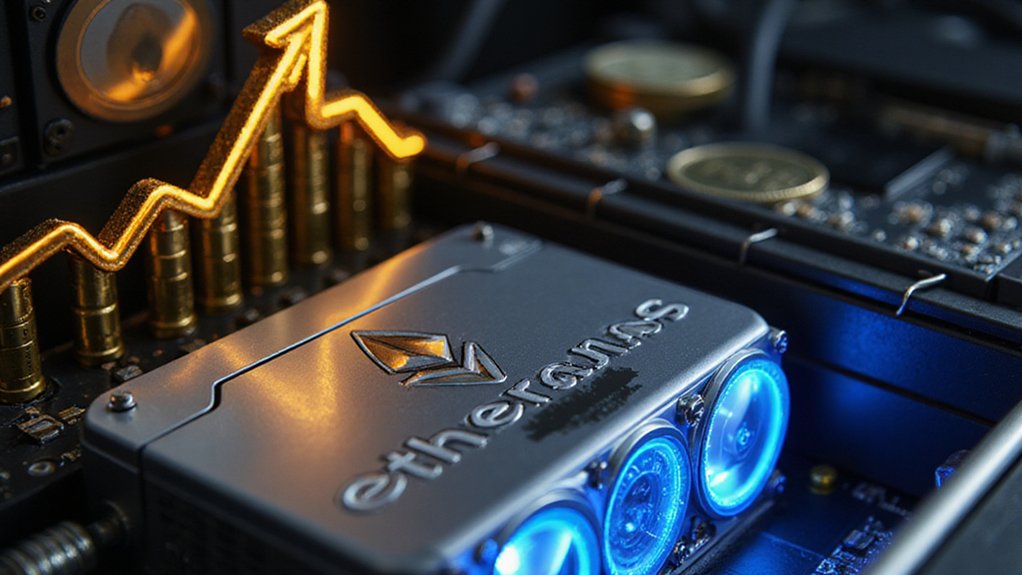While the crypto mining landscape witnesses titans like Tether preparing to deploy 450 MW of capacity in pursuit of 1% of global hashrate, it’s the smaller players who are demonstrating that size doesn’t always correlate with performance—a lesson that extends far beyond the mining farms of Wyoming and Texas.
The remarkable 3,000% surge in a small cryptocurrency miner’s valuation illustrates how strategic shift points can transform industry dynamics faster than one might expect. This particular company’s bold acquisition strategy targeting Ethereum mining infrastructure has captured market attention precisely because it defies conventional wisdom about scale requirements in an increasingly consolidated sector.
Small players are proving that strategic positioning can outperform massive scale in crypto mining’s evolving landscape.
Consider the broader context: Bitcoin hashrate recently hit an eight-month low at approximately 684 EH/s, while mining difficulty prepares for a 9.5% drop—conditions that typically favor nimble operators over lumbering giants. The post-2024 halving environment, with block rewards reduced to 3.125 BTC, has compressed margins across the board, yet smaller miners are discovering opportunities in alternative approaches that larger competitors often overlook.
The acquisition strategy represents a calculated bet on Ethereum’s continued relevance despite proof-of-stake change concerns. While major players like CleanSpark expand their Bitcoin operations to 50 EH/s operational hashrate and Cipher Mining targets 35 EH/s capacity, this smaller miner recognized that diversification beyond Bitcoin mining could yield disproportionate returns.
Strategic positioning in renewable energy infrastructure has become increasingly critical, with small and mid-sized miners adopting solar solutions to leverage excess electricity capacity. The company’s Ethereum-focused acquisitions align with this trend, potentially offering better margins than Bitcoin mining at current difficulty levels and electricity costs.
Market dynamics favor such contrarian plays when Bitcoin trades in the $55,000-$60,000 range—significantly lower than previous bull market peaks. The combination of reduced profitability in traditional Bitcoin mining and increased competition from entities deploying advanced ASIC technology creates fertile ground for alternative strategies. These efficiency gains mirror developments at established miners, where energy efficiency improvements to 16.15 J/Th demonstrate the sector’s relentless pursuit of operational optimization.
The 3,000% valuation increase suggests investors recognize that innovative approaches to mining infrastructure can generate outsized returns, particularly when executed by management teams willing to challenge industry orthodoxy. With the overall cryptocurrency mining hardware market expected to reach $51.8 billion by 2030, smaller miners are positioning themselves to capture disproportionate value from this expanding opportunity. As traditional mining operations face margin compression, some companies are exploring integration with DeFi protocols to generate additional revenue streams from their cryptocurrency holdings.
Whether this strategy proves sustainable remains to be seen, but the initial market response indicates appetite for disruption in an increasingly homogenized sector.







